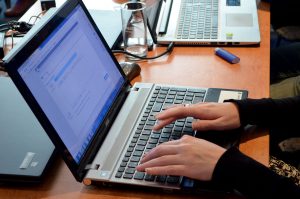As a first result, the pedagogical framework for the project was published.
Maria Ampezardi and Michail Kologianis presented the created framework in January, 2018.
Why active learning?

Active learning versus passive consuming – distance learning is a great option to involve learners actively!
Think of active should engage students to study the material (they have or want to learn) through reading, writing, talking, listening; work actively with multimedia material, and reflecting. Active learning stands in contrast to “standard” modes of instruction in which teachers do most of the talking and students are passive. This is closely connected with the finding that “learning cannot be delegated”. Active learning has the precondition that the learners want to learn, and they want to contribute to their learning personally.
This paper analyses the role of educators and learners and identyfies hree steps to self-determined learning:
- Pedagogy – the beginning of a learning path
- Self-directed learning[1] – the shared responsibility to learning
- Heutagogy – self-determined learning
Another core item in the pedagogical framework are the E-tivities for familiarization with technological and methodological features. The idea behind can be explained with five stages facilitating and supporting the learners:
- Access and motivation
At stage 1 individuals’ access is established, and participants are offered an induction to the course. - Online socialization
Learners set up their online identities (profiles), get to know each other and find people to begin interaction with. - Information exchange
Students start to exchange information and collaborate (on some short and easy tasks maybe)? - Knowledge construction
Group discussion and collaboration grow in length, depth and difficulty. - Development
Learners exercise choice, search for “more benefits from the system to help them achieve personal goals and reflect on the learning process” (Salmon, 2004, p. 11).
In the framework, these two dimensions are merged together and completed by an innovative tool for course creation and self-evaluation.
The document with the framework can be downloaded from the download page of the project.
Sources and comments
[1] For self-directed learning researchers actually use the term “andragogy” which literally means “leading of a man” (educating a male) – from the Greek ανδρ (male) – and αγωγή (leading – education). It refers to male education since there was no organized schooling for women in ancient Greece. We strongly suggest the avoidance of the term which may be considered to have a sexist connotation.
Salmon, G. (2004). E-tivities. The key to active online learning. London: Kogan Page.